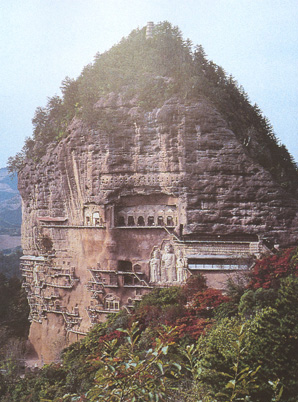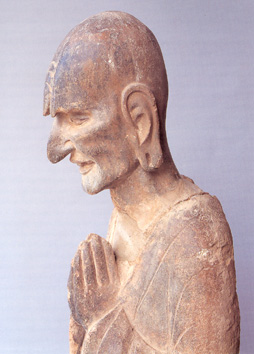|
The Maijishan Grottoes Located Southeast of Tianshyui City in Gansu Province on a 142 meters high hill named Maijishan, meaning "Wheat-pile Hill". Work on the grottoes started in the late 4th century and continued through successive North Wei (386-534 A.D.) and Song (960-1279 A.D.) dynasties until the 19th century. There are 194 existing caves, in which are preserved more than 7,000 sculptures made of terra cotta and over 1,000 square meters of murals. Earthquakes, rain and fire have damaged a large part of the caves and wooden structures. This photo is from a 2001 book published by the Asian Society called Monks & Merchants, Silk Roads Treasures from Northwest China, which has been accompanied by a traveling world exhibit. For more information go
to: More than 120 artifacts from the regions where the Silk Road wound through Chinese territory were on view at the Norton Museum of Art, West Palm Beach, Fla. March/April 2002. |
 |
